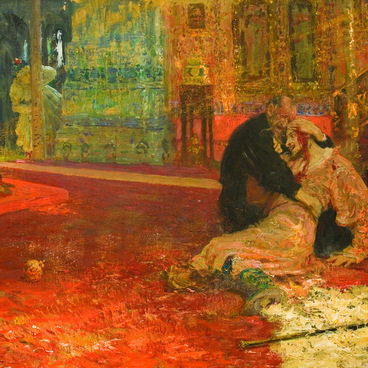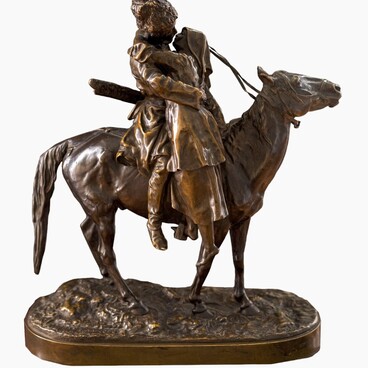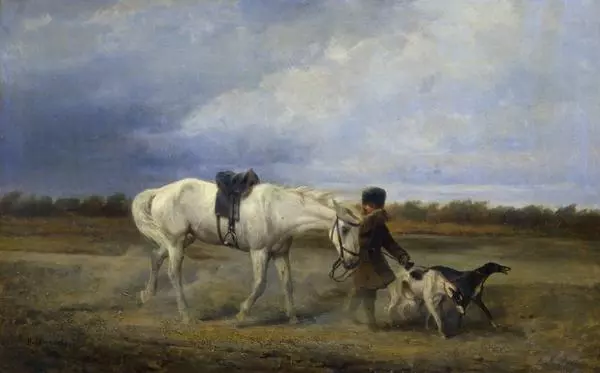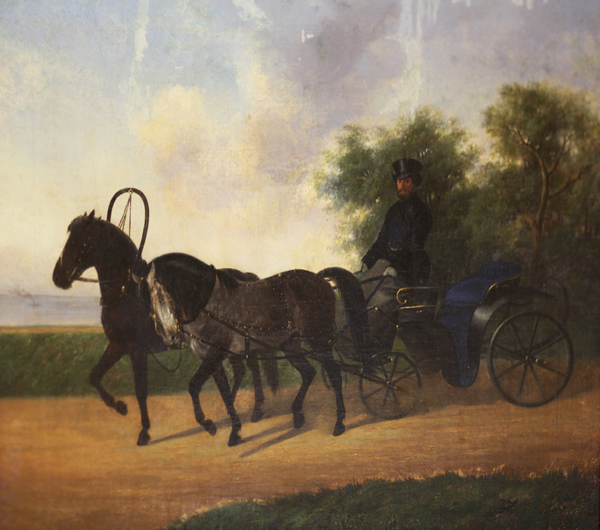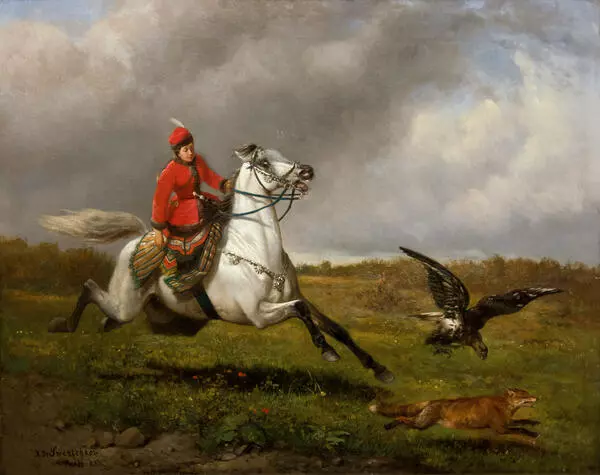Nikolai Yegorovich Sverchkov was a genre, portrait and animal painter, and creator of paintings on historical subjects. He also studied sculpture, graphics, and lithography. Nikolai Yegorovich was born in St. Petersburg in the family of an employee of the court stables. The boy began drawing horses and other animals early, showing observation and the ability to convey the habits of his “models.”
By 1852, Sverchkov’s skill became obvious: for the painting “The Landowner’s Troika Crossing the Wagon Train at Full Gallop, ” he was awarded the title of academician. Childhood impressions largely determined the painter’s artistic interests: his depictions of horses, including in genre scenes, were unique. Images of hunting scenes are a separate chapter in the history of Russian genre painting. Hunting was for the most part a male occupation, and hunting painting was mostly interesting for male hunters. In order to interest them in his works, the artist had to perfectly know the anatomy of the animals depicted, understand the habits of wild animals and how to hunt them. When evaluating a work of art, the talent and skill of the painter hardly played a major role. Much more important was that he doesn’t make a mistake in depicting the professional details of a particular type of hunting.
The gift of an animalist, the ability to truthfully and freely depict scenes with horses helped Sverchkov take the place of the artist of Russia’s largest state-owned stud farms. In this position, he created an entire gallery representing thoroughbred horses. Having become famous for his knowledge of breeds and the ability to convey their characteristics, Sverchkov began to receive orders from famous horse breeders. In 1864, he created for Emperor Alexander II the painting “Tsar Alexei Mikhailovich leaving to review the troops in 1664.”
Nikolai Sverchkov worked in other genres as well.
However, neither in historical nor in battle painting did Sverchkov prove
himself to be as subtle a master as he was in the animalistic genre. The
painting presented in the exhibition was received by the Ivan Kramskoy Museum
in 1933 from the Museum of Antiquities and Fine Arts of Voronezh State
University.
